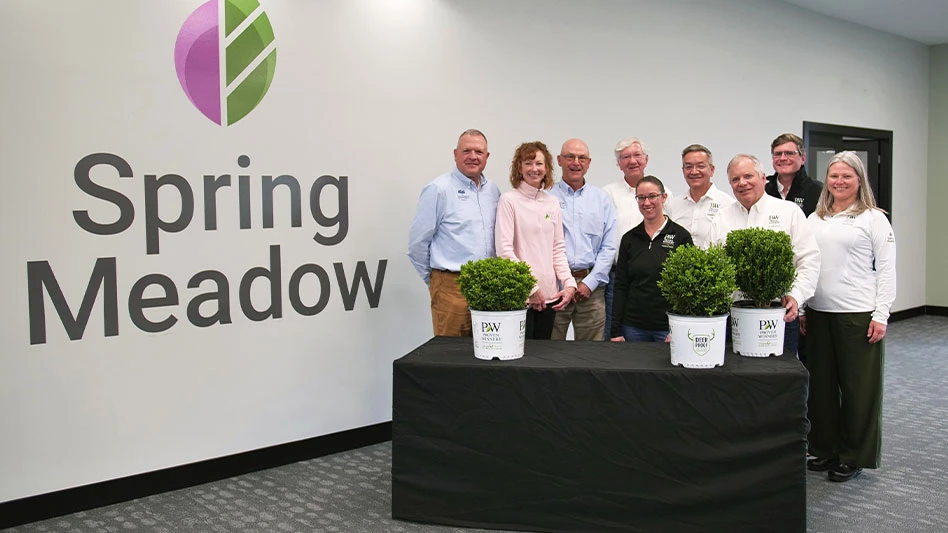
I remember the first dyed orchid I spotted at the big hort trade show in Germany. It was cobalt blue, an almost unnatural blue, a blue rarely found in nature. Horticulturists gasped, screamed, and then cried. Everyone said they would be a complete failure. But consumers loved them and bought a lot of them, much to the dismay of many professionals. So much money was made off this abomination that gift plant growers and buyers realized something very important. (And this is going to make my plant people very unhappy.) They realized people who would never have bought a plant previously, were the ones buying these dyed plants. Why? It’s simple - they thought they were pretty. Pretty is an important factor in a consumer’s plant purchase. Not how it smells, or how disease resistant it is. Not how dwarf or fast growing it is. These were pretty and that’s all it took for the average consumer to open their wallets and take these plants home.
I know, I know…really, I know! Cobalt blue orchids are a lie. So are tie-dyed roses, spray painted succulents and glitter-covered Easter grasses. The plant, if it lives long enough to grow a little larger or re-bloom, will not stay that color. We really are lying to consumers when we sell these, right?
Yes, but get over it.
As an industry, we must get over our horticultural snobbery when it comes to dyed and painted plants. Why? Because these plants help us sell more plants. People love them. They think they are pretty. They don’t care if they die. And most importantly, they might have just bought their first of many plants to come.
Isn’t that what this is all about? Selling more plants?
Enticing people who have never bought a plant is what we should be focusing our energy on, not poo-pooing the next decorated gift plant from the grocery store. I’ve been watching this market grow exponentially this year. They are trying everything. Some of it, in my opinion, is gross and some of it’s downright beautiful. None of it is natural, but who cares.
It all started with dried strawflowers glued to the top of any old cactus. People bought them because not only was it a cactus, which was cool in its own right, but that cactus now had a really pretty pink, orange or yellow flower on top. It had to be real, right? We all knew it was glued on, but consumers didn’t. Most know so little about plants that this should be no surprise. It’s the 80/20 rule – 80 percent know little to nothing and 20 percent know a lot.
I do think it’s important to let the buyer know the plants are dyed or painted. I recently saw a label on a painted succulent that told the consumer the plant would change colors as it grew and it if it was doing well and healthy, it might even turn green as it gets bigger.
That’s a start.
How do trained horticulturists and designers get over their phobia of dyed and colored plants? Step one is realizing it’s okay, as long as we are truthful. As long as we tell consumers it is painted or dyed and as long as we tell them the next flowers might be white, it’s okay. Think of them as decorations or tchotchkes (dare I say, the island of misfit toys?).
I know, I know… really? Yes, really!
It’s not that I want these plants to die, and it’s not that I don’t want people to appreciate plants in their natural state – trust me, I do. But what I really want is to expand the consumer base who buys plants and to get people to take things home and try them. What if these plants are our “gateway drugs?” What if they get hooked and see other stuff that entices them because this one lived and did well, so they come back for more? What if the next time they shop they see that naturally mauve echeveria or naturally black aeonium on the shelf and think this is the most beautiful plant they have ever seen? They might take it home and we have just created a lifelong buyer – the birth of a new plant person.
Isn’t that what this is all about? Teaching people to love and need plants?
Get over your dang horticulturally snobbish selves and don’t ditch the dye job. Embrace it!


Explore the April 2017 Issue
Check out more from this issue and find your next story to read.
Latest from Nursery Management
- The HC Companies, Classic Home & Garden merge as Growscape
- Terra Nova releases new echinacea variety, 'Fringe Festival'
- Eason Horticultural Resources will now officially be known as EHR
- BioWorks receives EPA approval for new biological insecticide for thrips, aphids, whiteflies
- Ellen Mackenbach-Lakeman appointed new CEO of Dümmen Orange
- The Growth Industry Episode 3: Across the Pond with Neville Stein
- Southern Garden Tour sets 2025 dates for trial garden open houses
- New book explores plants that thrive in Rocky Mountains




